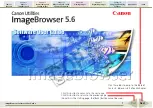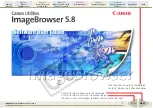
angle brackets (< >)
Enter text based on the description inside the brackets. Do
not type the brackets when entering the command.
Example: If the command syntax is
ping
<ip_address>
,
enter:
ping 192.32.10.12
bold text
Objects such as window names, dialog box names, and
icons, as well as user interface objects such as buttons,
tabs, and menu items.
bold Courier text
Command names, options, and text that you must enter.
Example: Use the
dinfo
command.
Example: Enter
show ip {alerts|routes}
.
braces ({})
Required elements in syntax descriptions where more than
one option exists. You must choose only one of the options.
Do not type the braces when you enter the command.
Example: If the command syntax is
show ip
{alerts|routes}
, you must enter either
show ip
alerts
or
show ip routes
, but not both.
brackets ([ ])
Optional elements in syntax descriptions. Do not type the
brackets when you enter the command.
Example: If the command syntax is
show ip
interfaces [-alerts]
, you can enter either
show
ip interfaces
or
show ip interfaces -
alerts
.
ellipsis points (. . .)
Repeat the last element of the command as needed.
Example: If the command syntax is
ethernet/2/1 [
<parameter> <value>
]...
, you enter
ethernet/2/1
and as many parameter-value pairs as needed.
italic text
Variables in command syntax descriptions. Italics also
indicate new terms and book titles. Where a variable is two
or more words, the words are connected by an
underscore.
Example: If the command syntax is
show at
<valid_route>
,
valid_route
is one variable, and you
substitute one value for it.
plain Courier text
Command syntax and system output, for example, prompts
and system messages.
Example:
Set Trap Monitor Filters
separator ( > )
Menu paths.
Example:
Protocols > IP
identifies the
IP
command on the
Protocols
menu.
vertical line ( | )
Options for command keywords and arguments. Enter only
one of the options. Do not type the vertical line when you
enter the command.
Introduction
6 Avaya Endpoint Access Control Agent User’s Guide
May 2011







































